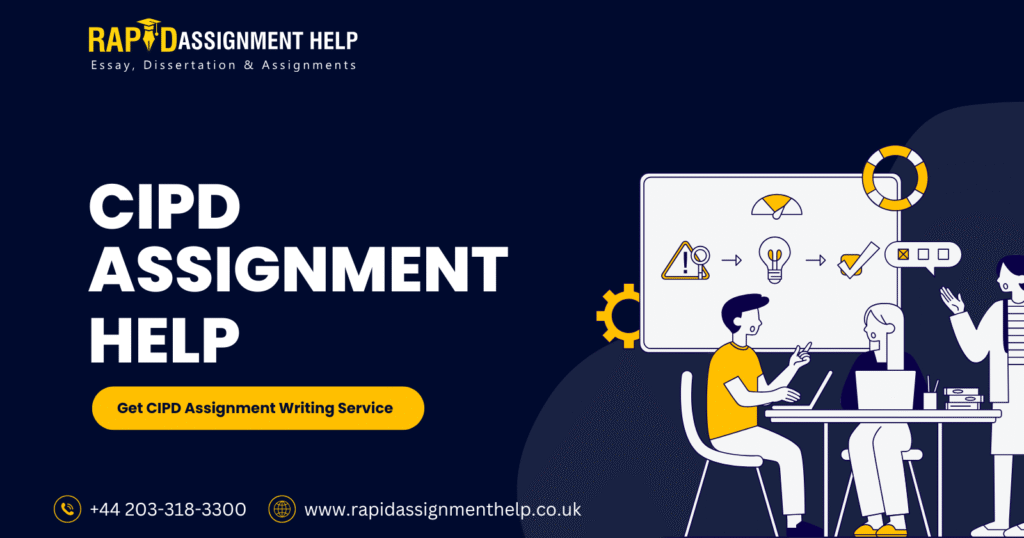Studying for a CIPD qualification in the UK is a powerful step toward a career in human resources (HR) or learning and development (L&D). But let’s be honest—many students begin the course with enthusiasm and quickly realise that the expectations are far more demanding than they anticipated.
Whether you’re on Level 3, Level 5, or preparing for Level 7, you’re expected to master terminology-heavy frameworks, deliver reflective assignments, stay updated on employment law, and navigate organisational behaviour theories—often while managing work or family responsibilities. That’s a lot to juggle.
This guide will help you turn that stress into structure, confusion into clarity, and self-doubt into capability.
🎯 Understanding the Real Demands of CIPD Studies
CIPD isn’t just about writing a paper and getting a grade. It’s about thinking like a future HR professional. This means:
-
Analysing complex employee issues and workplace scenarios.
-
Applying HR models to real-life organisational settings.
-
Reflecting on your experiences and learning process.
-
Evaluating solutions, policies, or practices in context.
These expectations often leave students wondering: “Am I doing this right?”
Here’s where CIPD Assignment Help becomes a lifeline. With structured feedback, example answers, and unit-focused resources, you get clarity on expectations—especially for tricky units like 5HRF (Resourcing Talent) or 7CO02 (People Management and Development Strategies for Performance).
🔍 Common Student Pain Points—and How to Beat Them
Let’s take a look at the most common challenges students face, along with practical solutions you can start using today.
❌ Problem 1: “I don’t know where to start.”
Solution: Always begin with the assignment brief and assessment criteria. Highlight the verbs: are you being asked to “describe,” “evaluate,” or “critically analyse”? Each word signals the depth expected in your response.
✏️ Tip: Use the acronym PEEL (Point, Evidence, Explanation, Link) to structure each paragraph.
❌ Problem 2: “I don’t know how to write reflectively.”
Reflective writing is not storytelling. It’s about examining what happened, how you felt, what you learned, and how you’ll improve.
Use models like:
-
Gibbs’ Reflective Cycle
-
Kolb’s Learning Cycle
-
Schon’s Reflection-in-Action vs. Reflection-on-Action
🧠 Example: Instead of saying “I learned communication is important,” say, “Applying Tuckman’s team development model, I realised our group was stuck in the ‘storming’ phase due to unclear communication roles. I’ll use SMART goals in future team meetings to clarify expectations.”
❌ Problem 3: “The theory makes no sense!”
Solution: Don’t just memorise definitions. Apply theories to real examples.
For instance:
-
Ulrich’s HR Business Partner Model? Think of how HR in your current or past job helped drive business strategy.
-
Herzberg’s Two-Factor Theory? Reflect on what motivated or demotivated you in a past role.
Bridging theory and experience is the core of CIPD learning.
🧩 Make Assignments Work for You—Not Against You
Assignments can be reframed as career development opportunities. For instance:
-
Writing a report on employee engagement? You’re practising how to pitch ideas to leadership.
-
Analysing employment law changes? You’re sharpening skills employers want in an HR advisor.
It’s not about perfection. As we say in one of our featured resources—“Beyond the Deadline Dash: Your Essential Guide to Crafting High-Scoring Assignments”—the best strategy is to simplify, structure, and reflect consistently.
📚 Trusted Resources to Boost Your Success
Apart from your course material, seek out reliable external sources. A standout example is Articles by Rapid Assignment Help on Guest Post, where students share practical advice, breakdowns of tough modules, and reflective practice frameworks.
Other resources include:
-
CIPD official website: Great for policy updates, industry reports, and professional standards.
-
Google Scholar / JSTOR: For academic journal articles that strengthen your citations.
-
Library and LMS platforms: Use your university’s digital tools for referencing templates and past student samples.
🚀 Developing a Resilient Learning Mindset
Success in CIPD doesn’t come from knowing everything—it comes from developing a learning mindset. That means:
-
Being honest about what you don’t know.
-
Asking questions early and often.
-
Reflecting on feedback—and applying it.
-
Collaborating with peers to share insights and examples.
✨ Final Word: You’ve Got This
If you’re feeling overwhelmed, take a breath. Thousands of UK students are walking the same journey—and many started where you are now.
CIPD isn’t about being the perfect writer or memorising every theory by heart. It’s about building a mindset that’s analytical, adaptable, and grounded in empathy. That’s what makes a great HR professional.
And when it gets tough, revisit this principle:
💬 “Get Ahead in Your HR Career with CIPD Assignment Help” isn’t about shortcuts. It’s about understanding expectations, using your voice, and presenting ideas with confidence.
You’re not just earning a qualification. You’re building a future of meaningful work.












































